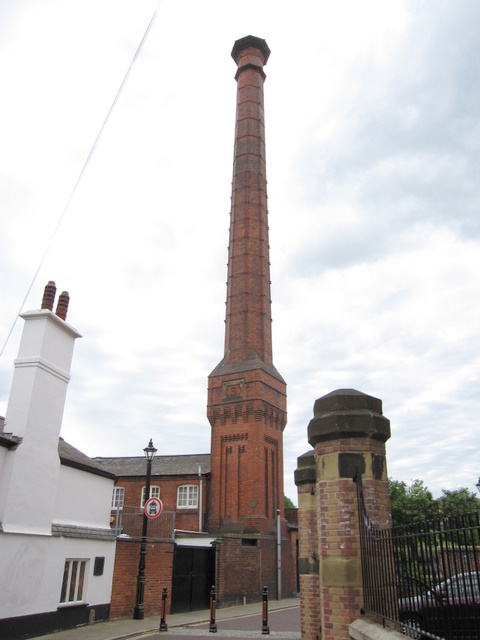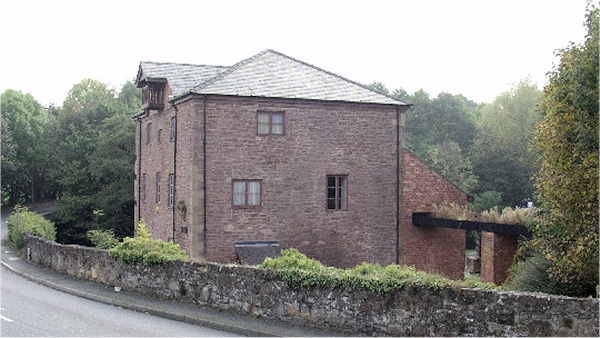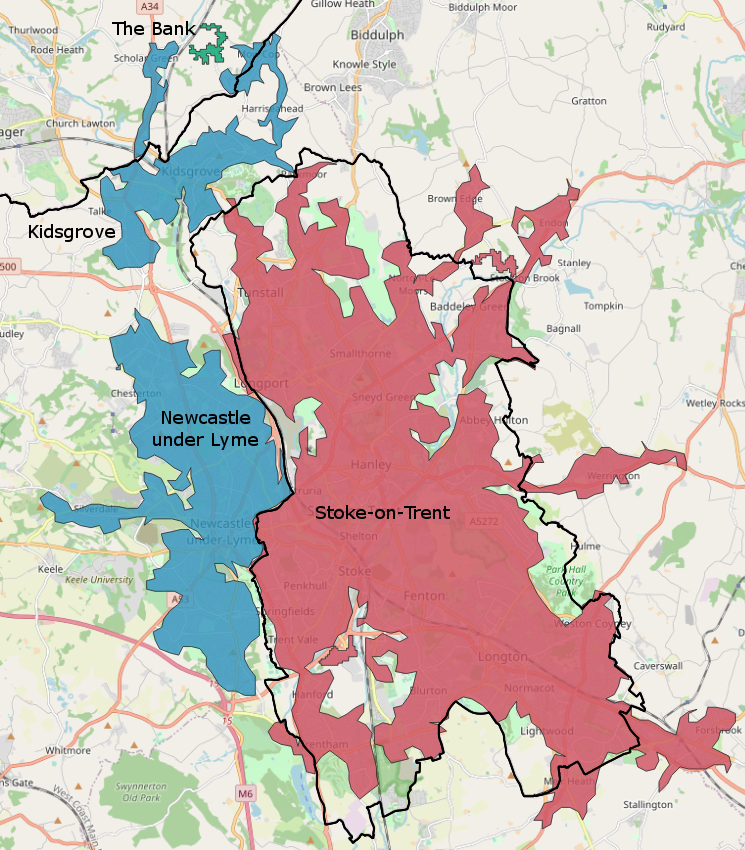|
Border Breweries (Wrexham)
Border Breweries (Wrexham) Ltd was a brewery in Wrexham, Wales, between 1874 and 1984. History Border Breweries had its roots in a small operation at the Nag's Head public house in Wrexham, which was run by the Rowlands family between 1834 and 1874. It was subsequently acquired by Henry Aspinall - who named it the Wrexham Brewery and expanded it substantially - before being taken over by Arthur Soames, who entrusted his 21-year-old son Frederick with management. Within ten years, Frederick Soames had built up the business into a major producer. Following the financial impact of the Great Depression, Border was formed by the 1931 merger of the Soames Wrexham Brewery, then in liquidation, the nearby Island Green Brewery (dating from 1856), and the Oswestry firm of Dorsett Owen.Blocker, J. S. ''et al'', ''Alcohol and Temperance in Modern History'', 2003, p.643 Operations were then concentrated at the Soames Brewery site. [...More Info...] [...Related Items...] OR: [Wikipedia] [Google] [Baidu] |
Brewing
Brewing is the production of beer by steeping a starch source (commonly cereal grains, the most popular of which is barley) in water and fermenting the resulting sweet liquid with yeast. It may be done in a brewery by a commercial brewer, at home by a homebrewer, or communally. Brewing has taken place since around the 6th millennium BC, and archaeological evidence suggests that emerging civilizations, including ancient Egypt and Mesopotamia, brewed beer. Since the nineteenth century the brewing industry has been part of most western economies. The basic ingredients of beer are water and a fermentable starch source such as malted barley. Most beer is fermented with a brewer's yeast and flavoured with hops. Less widely used starch sources include millet, sorghum and cassava. Secondary sources (adjuncts), such as maize (corn), rice, or sugar, may also be used, sometimes to reduce cost, or to add a feature, such as adding wheat to aid in retaining the foamy head of the beer. ... [...More Info...] [...Related Items...] OR: [Wikipedia] [Google] [Baidu] |
Gravity (alcoholic Beverage)
Gravity, in the context of fermenting alcoholic beverages, refers to the specific gravity (abbreviated SG), or relative density compared to water, of the wort or must at various stages in the fermentation. The concept is used in the brewing and wine-making industries. Specific gravity is measured by a hydrometer, refractometer, pycnometer or oscillating U-tube electronic meter. The density of a wort is largely dependent on the sugar content of the wort. During alcohol fermentation, yeast converts sugars into carbon dioxide and alcohol. By monitoring the decline in SG over time the brewer obtains information about the health and progress of the fermentation and determines that it is complete when gravity stops declining. If the fermentation is finished, the specific gravity is called the final gravity (abbreviated FG). For example, for a typical strength beer, original gravity (abbreviated OG) could be 1.050 and FG could be 1.010. Several different scales have been used for ... [...More Info...] [...Related Items...] OR: [Wikipedia] [Google] [Baidu] |
Burtonwood Brewery
Burtonwood is a village in the civil parish of Burtonwood and Westbrook, in the Borough of Warrington, Cheshire, England. Within the boundaries of the historic county of Lancashire, the name Burtonwood is known worldwide as the location of the former RAF Station Burtonwood military camp. Burtonwood village itself is a few miles away from the site of the former station. The civil parish also includes Westbrook, which is a council ward and suburb of Warrington. According to the 2001 census, the population of the entire civil parish was 11,265. Retrieval Date: 8 September 2007. History Burtonwood was a chapelry in the ancient parish of Warrington, in the West Derby Hundred of Lancashire. It was later created a civil parish and was part of the Warrington Poor Law Union and then the Warrington Rural District. By 1974 the village of Burtonwood became part of Warrington District and is now part of the Warrington Unitary Authority. It is still a civil parish (now named Burton ... [...More Info...] [...Related Items...] OR: [Wikipedia] [Google] [Baidu] |
Regional Brewery
A brewery or brewing company is a business that makes and sells beer. The place at which beer is commercially made is either called a brewery or a beerhouse, where distinct sets of brewing equipment are called plant. The commercial brewing of beer has taken place since at least 2500 BC; in ancient Mesopotamia, brewers derived social sanction and divine protection from the goddess Ninkasi. Brewing was initially a cottage industry, with production taking place at home; by the ninth century, monasteries and farms would produce beer on a larger scale, selling the excess; and by the eleventh and twelfth centuries larger, dedicated breweries with eight to ten workers were being built. The diversity of size in breweries is matched by the diversity of processes, degrees of automation, and kinds of beer produced in breweries. A brewery is typically divided into distinct sections, with each section reserved for one part of the brewing process. History Beer may have been known in Neol ... [...More Info...] [...Related Items...] OR: [Wikipedia] [Google] [Baidu] |
Racecourse Ground
The Racecourse Ground ( cy, Y Cae Ras) is a football stadium in Wrexham, Wales. It is the home of Wrexham A.F.C. It is the world's oldest international football stadium that still hosts international matches, having hosted Wales' first home international match in 1877, and has hosted more Wales international matches than any other ground. The record attendance at the ground was set in 1957, when Wrexham hosted a match against Manchester United in front of 34,445 spectators. The Racecourse Ground is the largest stadium in north Wales and the fifth largest in Wales. The ground is sometimes used by the Football Association of Wales for home international games. The ground has also been used by North Wales Crusaders rugby league club, Scarlets rugby union club and Liverpool Reserves. In the early days, the ground was used for cricket and horse racing. Concerts returned to the Racecourse in 2016 when Stereophonics performed. History Wrexham Football Club have played at the ... [...More Info...] [...Related Items...] OR: [Wikipedia] [Google] [Baidu] |
Wrexham F
Wrexham ( ; cy, Wrecsam; ) is a city and the administrative centre of Wrexham County Borough in Wales. It is located between the Welsh mountains and the lower Dee Valley, near the border with Cheshire in England. Historically in the county of Denbighshire, and later the county of Clwyd in 1974, it has been the principal settlement of Wrexham County Borough since 1996. Wrexham has historically been one of the primary settlements of Wales. At the 2011 Census, it had an urban population of 61,603 as part of the wider Wrexham built-up area which made it Wales's fourth largest urban conurbation and the largest in north Wales. The city comprises the local government communities of Acton, Caia Park, Offa and Rhosddu. Wrexham's built-up area extends further into villages like Bradley, Brymbo, Brynteg, Gwersyllt, New Broughton, Pentre Broughton and Rhostyllen. Wrexham was likely founded prior to the 11th century and developed in the Middle Ages as a regional centre for ... [...More Info...] [...Related Items...] OR: [Wikipedia] [Google] [Baidu] |
Welsh Dragon
The Welsh Dragon ( cy, y Ddraig Goch, meaning 'the red dragon'; ) is a heraldic symbol that represents Wales and appears on the national flag of Wales. As an emblem, the red dragon of Wales has been used since the reign of Cadwaladr, King of Gwynedd from around 655AD and is historically known as the "Red Dragon of Cadwaladr". Ancient leaders of the Celtic Britons that are personified as dragons include Maelgwn Gwynedd, Mynyddog Mwynfawr and Urien Rheged. Later Welsh "dragons" include Owain Gwynedd, Llywelyn ap Gruffydd and Owain Glyndŵr. The red dragon appears in the ancient '' Mabinogion'' story of Lludd and Llefelys where it is confined, battling with an invading white dragon, at Dinas Emrys. The story continues in the , written around AD 829, where Gwrtheyrn, King of the Britons is frustrated in attempts to build a fort at Dinas Emrys. He is told by a boy Emrys, to dig up two dragons fighting beneath the castle. He discovers the white dragon representing the An ... [...More Info...] [...Related Items...] OR: [Wikipedia] [Google] [Baidu] |
The Potteries Urban Area
The Stoke-on-Trent Built-up Area or The Potteries Urban Area or colloquially, simply "The Potteries" is a conurbation in North Staffordshire in the West Midlands region of England. It includes the City of Stoke-on-Trent, and parts of the boroughs of Newcastle-under-Lyme and Staffordshire Moorlands. The area had a population of 384,000 in 2019, a small increase from the 2001 census figure of 362,403 with Stoke-on-Trent making up over 70% of this population. It is sometimes called The Potteries Urban Area due to the area's fame for pottery manufacture ever since the industrial revolution The Industrial Revolution was the transition to new manufacturing processes in Great Britain, continental Europe, and the United States, that occurred during the period from around 1760 to about 1820–1840. This transition included going f .... See also * Staffordshire Potteries * Federation of Stoke-on-Trent References The Potteries {{Staffordshire-geo-stub ... [...More Info...] [...Related Items...] OR: [Wikipedia] [Google] [Baidu] |
Shropshire
Shropshire (; alternatively Salop; abbreviated in print only as Shrops; demonym Salopian ) is a landlocked historic county in the West Midlands region of England. It is bordered by Wales to the west and the English counties of Cheshire to the north, Staffordshire to the east, Worcestershire to the southeast, and Herefordshire to the south. A unitary authority of the same name was created in 2009, taking over from the previous county council and five district councils, now governed by Shropshire Council. The borough of Telford and Wrekin has been a separate unitary authority since 1998, but remains part of the ceremonial county. The county's population and economy is centred on five towns: the county town of Shrewsbury, which is culturally and historically important and close to the centre of the county; Telford, which was founded as a new town in the east which was constructed around a number of older towns, most notably Wellington, Dawley and Madeley, which is tod ... [...More Info...] [...Related Items...] OR: [Wikipedia] [Google] [Baidu] |
Tied House
In the United Kingdom, a tied house is a public house required to buy at least some of its beer from a particular brewery or pub company. That is in contrast to a free house, which is able to choose the beers it stocks freely. A report for the UK government described the tied pub system as "one of the most inter‐woven industrial relationships you can identify in the UK, with multiple streams of payments running in both directions, from the pub tenant to the pubco and vice versa, generally negotiated on a pub‐by‐pub basis." Free and tied houses The pub itself may be owned by the brewery or pub company in question, with the publican renting the pub from the brewery or pub company, termed a tenancy. Alternatively, the brewery may appoint a salaried manager while retaining ownership of the pub; that arrangement is a "managed house". Finally, a publican may finance the purchase of a pub with soft loans (usually a mortgage) from a brewer and be required to buy his beer fro ... [...More Info...] [...Related Items...] OR: [Wikipedia] [Google] [Baidu] |
Soft Drink
A soft drink (see § Terminology for other names) is a drink that usually contains water (often carbonated), a sweetener, and a natural and/or artificial flavoring. The sweetener may be a sugar, high-fructose corn syrup, fruit juice, a sugar substitute (in the case of ''diet drinks''), or some combination of these. Soft drinks may also contain caffeine, colorings, preservatives, and/or other ingredients. Soft drinks are called "soft" in contrast with " hard" alcoholic drinks. Small amounts of alcohol may be present in a soft drink, but the alcohol content must be less than 0.5% of the total volume of the drink in many countries and localities See §7.71, paragraphs (e) and (f). if the drink is to be considered non-alcoholic. Types of soft drinks include lemon-lime drinks, orange soda, cola, grape soda, ginger ale, and root beer. Soft drinks may be served cold, over ice cubes, or at room temperature. They are available in many container formats, including ... [...More Info...] [...Related Items...] OR: [Wikipedia] [Google] [Baidu] |
Hops
Hops are the flowers (also called seed cones or strobiles) of the hop plant '' Humulus lupulus'', a member of the Cannabaceae family of flowering plants. They are used primarily as a bittering, flavouring, and stability agent in beer, to which, in addition to bitterness, they impart floral, fruity, or citrus flavours and aromas. Hops are also used for various purposes in other beverages and herbal medicine. The hops plants have separate female and male plants, and only female plants are used for commercial production. The hop plant is a vigorous, climbing, herbaceous perennial, usually trained to grow up strings in a field called a hopfield, hop garden (in the South of England), or hop yard (in the West Country and United States) when grown commercially. Many different varieties of hops are grown by farmers around the world, with different types used for particular styles of beer. The first documented use of hops in beer is from the 9th century, though Hildegard of Bingen, ... [...More Info...] [...Related Items...] OR: [Wikipedia] [Google] [Baidu] |









